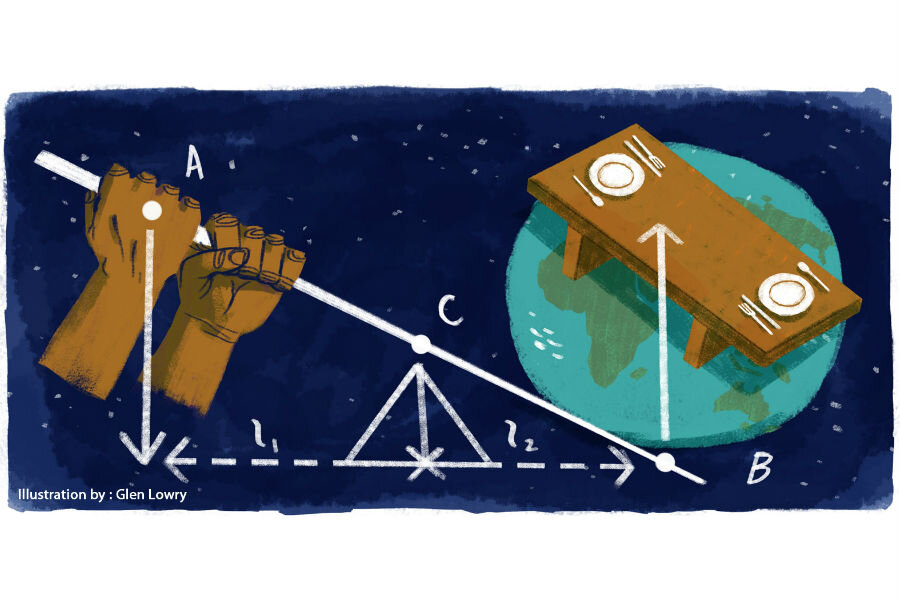How to boost food production but not emissions? Researchers identify key ways.
Loading...
Around the world, some 800 million people – that’s 1 in 8 global citizens – do not have access to enough food to maintain a healthy and active lifestyle, according to the United Nations’ World Food Program. While the current international agricultural system is not feeding millions, it already produces a hefty share of the world's greenhouse gases, making expansion of food production an extremely delicate balancing act.
Finding a way to feed a global population expected to swell to 9.5 billion people by 2050 in a changing climate may seem like an insurmountable task. However, realistic measures to address these daunting challenges may be much simpler than they seem, researchers at the University of Minnesota found.
“It seems like most of the global story for each of these issues is explained by a couple of crops in a couple of parts of the world,” says ecologist Paul West at the University of Minnesota in St. Paul.
In a paper released Thursday and published Friday in the journal Science, Mr. West and his colleagues identify several ways in which minimal investment of resources could boost food production on existing cropland while reducing the environmental impact of global agriculture.
One of the first issues highlighted by West’s team is the so-called yield gap, the difference between the amount of food that could be produced on a given acre of land and the actual yield, he says.
In some parts of the world, particularly in Africa and Eastern Europe, farmers scrape what they can from the earth, essentially stripping the land of all available nutrients. Closing even half of the existing yield gap could feed an additional 850 million people, the authors write.
At the same time, in other parts of the world the application of too many nutrients poses a different set of problems.
In the United States, China, and India, many farmers flood their crops with so much fertilizer that unabsorbed nitrogen and phosphorous pollute nearby rivers, lakes, and streams. Excess nitrogen also leads to production of the greenhouse gas nitrous oxide. More than half of all nitrous oxide produced by agriculture comes from the US and China.
“This is really like a Goldilocks type of problem,” West says. “In some areas you have an excess amount, in others you have too little. The goal has to be to find a sweet spot that’s just right.”
Another discrepancy highlighted by this study, one particularly prominent in the US, is the so-called diet gap, or the difference between the number of calories that are grown and the number of calories that actually feed people.
“Since so much of our agricultural land is used to grow corn and beans for feed and fuel, there’s not anywhere near as much calories that are growing that end up on the table,” West says.
If current crops destined for feed and fuel were redesignated for direct human consumption, a full 70 percent more calories would become available to feed an additional 4 billion people, the authors write. The idea is for food to revolve more around grains and vegetables and less around meat, especially highly energy-intensive beef.
That point strikes a chord with Danielle Nierenberg, president of Food Tank, a Chicago-based think tank focusing on issues of food security.
Growing grain to feed livestock “is such a resource-intensive way to produce food,” Ms. Nierenberg says. “Really, cutting down on how much meat consumers eat every day has an impact on not just food availability, but also personal health, and agriculture’s environmental footprint.”
Both West and Nierenberg stress that even small reductions in meat consumption can add up to large benefits.
“We’re not advocating that everyone has to become a vegetarian or a vegan,” West says. “Our aim is to show how much diet and waste impacts how many calories are available in the food system and that small amounts of changes can have a dramatic effect on freeing up other calories for other people.”
Food waste is a major challenge that can be at least partially addressed at the level of individual consumers, West says. Between 30 and 40 percent of all food produced around the world never makes it to anyone’s plate – going bad on the vine or expiring in the fridge. Curbing consumer waste in the US, China, and India alone could feed an additional 413 million people, the researchers project.
Nierenberg and other activists have targeted food waste as “low-hanging fruit,” just waiting to be picked.
“Food waste isn’t just about making sure that we’re not wasting food,” she says.
"It’s about curbing the environmental impacts that food waste can have. That food ends up in landfills. It contributes to methane gas emissions. It’s not just about making sure that it gets to someone’s plate; it’s about making sure that it doesn’t contribute to climate change.”








